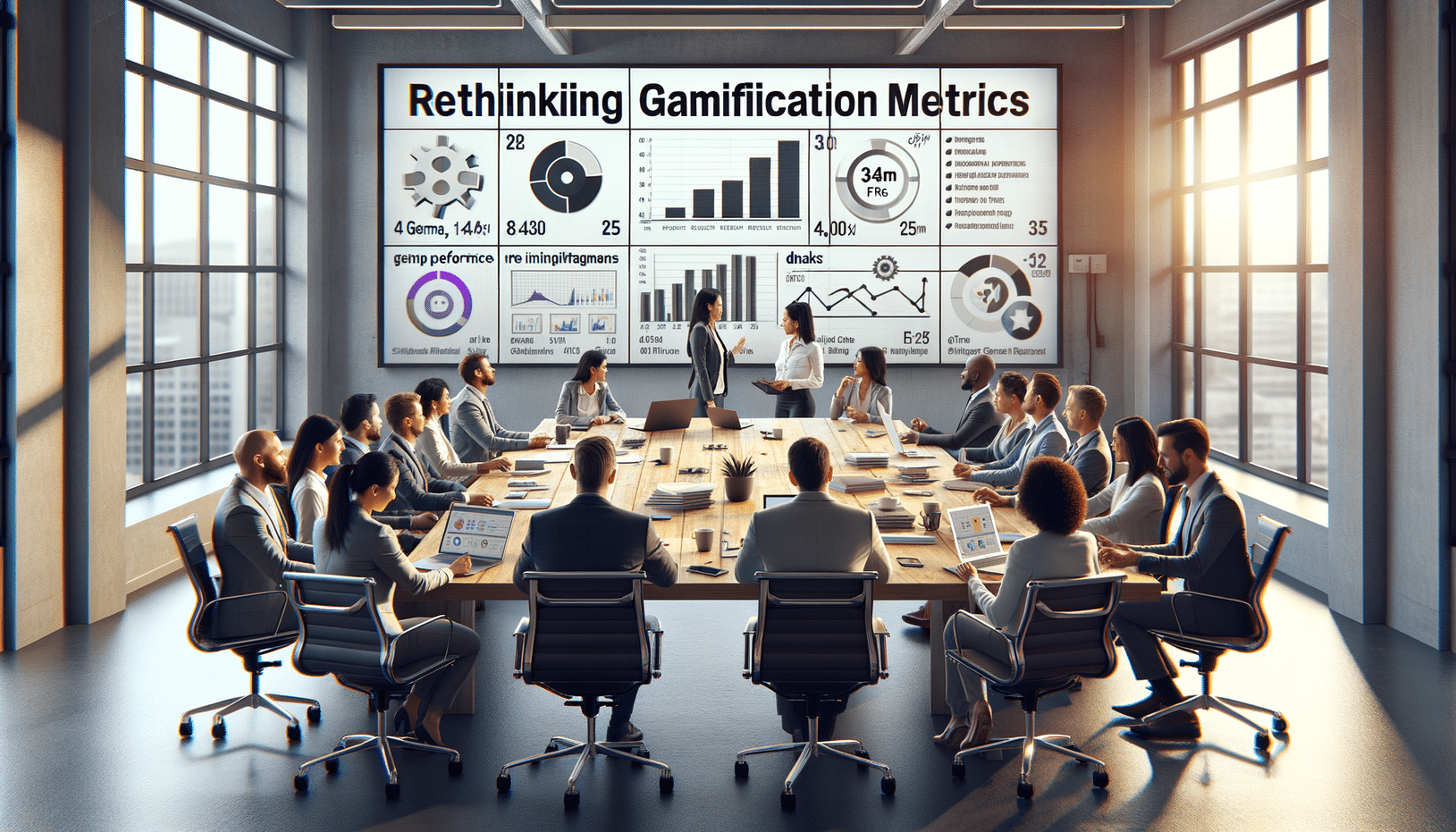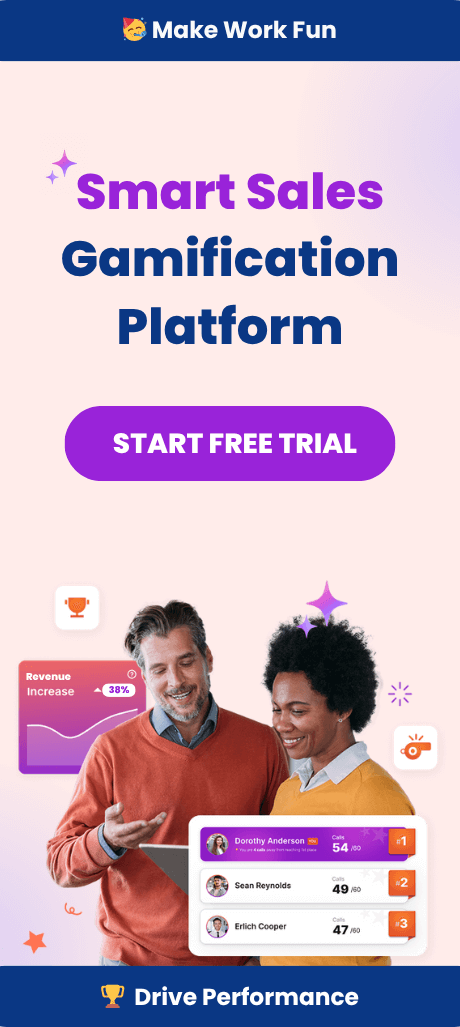Rethinking Gamification Metrics: The Next Evolution in Employee and Sales Performance
The concept of gamification has traveled a long distance from a buzzword used to inject novelty into the workplace to a strategic lever for unlocking sustained performance gains. However, as adoption scales, executive leaders face a new challenge: separating metrics that genuinely move the needle from those that add noise. Which gamification KPIs should rise to the top of your dashboard as proof of progress, and which distract from outcomes that matter?
Why Gamification KPIs Need a New Lens
Gamification first gained traction in business circles because of its ability to spark healthy competition, create visible progress, and deliver immediate feedback. These mechanisms are still vital, yet the landscape has grown more sophisticated. Sales enablement leaders and RevOps executives are now expected to tie gamification to bottom-line business results, not just engagement rates or digital high-fives. The time is ripe to critically examine how we define, measure, and act on gamification KPIs in both sales environments and broader employee engagement programs.
The Danger of Superficial Metrics
If your gamification initiative is driven by sheer number of badges earned, logins recorded, or levels completed, you may be standing on shaky ground. Why? Activity metrics tell you who is participating, but rarely reveal whether an employee is learning new skills, changing behaviors, or improving productivity. Worse, superficial KPIs can breed complacency. Teams may check a digital box for points, yet the behaviors that drive sustainable results often slip under the radar.
Key pitfalls of surface-level gamification metrics:
- They over-report program success while masking lackluster impact on sales revenue or employee retention.
- They encourage playing the system, which risks undermining trust in your gamification platforms.
- They result in wasted resources as leadership loses sight of real levers for team development.
Defining Strategic Gamification KPIs for the Modern Team
High-impact KPIs are not about following a one-size-fits-all formula. They should align closely with your organizational priorities, whether that means accelerating pipeline velocity, reducing rep churn, or deepening customer relationships. Executives benefit from framing their measurement strategy around a few core principles:
- Behavior Change Over Activity Volume: Are staff adopting best practices, or simply doing more of the same?
- Value Delivery to the Business: How does gamified performance map to critical business outcomes?
- Feedback Loop Strength: Are insights from gamification tools shaping future coaching or performance interventions?
This recalibration is especially pivotal in SaaS and sales organizations, where lengthy cycles and intangible assets can blur what success looks like. The process requires partnership between frontline leaders, enablement professionals, and executives. Each stakeholder must help define which gamification metrics truly align with growth strategies and people objectives.
Designing Metrics That Reflect Employee Engagement’s Nuances
Employee engagement, despite its status as a perennial buzzword, is deeply context-driven. What inspires motivation in a high-growth sales team may differ drastically from the drivers for a multi-generational service organization. Thus, your gamification measurements should reflect these nuances. Good engagement KPIs signal satisfaction, pride, and intrinsic motivation — not just hours logged on a platform.
Engagement KPIs that move the needle:
- Employee Net Promoter Score (eNPS) linked directly to participation in gamified activities.
- Feedback frequency post-gamification campaigns, highlighting two-way communication and trust.
- Participation ratios paired with qualitative data: Are high-performers engaged, or only the middle tier?
Sales Performance Metrics: Elevating Accountability
Sales gamification naturally lends itself to leaderboard-driven metrics and visible competition. Yet, the art lies in ensuring that metrics measure not just outcomes, such as closed deals, but also the critical behaviors that enable those wins. Executive readers understand that it’s not simply about the top line, but about how gamification nudges reps to prospect more effectively, follow up with rigor, and leverage peer-to-peer learning opportunities.
The most valuable sales gamification KPIs often include:
- Metrics based on sales cycle progression (moving deals from one stage to the next, not just closing).
- Quality of customer interactions, such as call ratings or follow-up cadence, tracked alongside pure volume.
- Coaching participation and outcome tracking, linking gamification directly with skill development.
How Digital Leaderboards Are Evolving Metrics
Digital leaderboards, a staple in modern gamification, have evolved far beyond static wall charts. The newest platforms offer dynamic, real-time displays that reflect shifting performance variables, encourage healthy rivalry, and provide instant recognition. However, what truly separates state-of-the-art leaderboards is their ability to surface actionable insights, rather than simply rank individuals.
Consider Spinify’s customizable leaderboard solutions, which empower organizations to “weight” metrics according to strategic importance. Rather than rewarding top closers by volume alone, leaderboards can prioritize new pipeline generated, high-value upsells, or customer satisfaction ratings based on the company’s quarterly focus. Book a demo to see how metric-driven leaderboards change the performance conversation for both sales and cross-functional teams.
The Role of Gamification in Employee Retention
One imperative metric for any executive is employee retention. Gamification is increasingly being used as a tool to not just spark momentum but to drive long-term engagement and lower churn. When gamification aligns with recognition, learning, and growth opportunities, attrition rates tend to decline. Tracking the correlation between program participation and turnover gives organizations hard evidence of gamification’s influence on stickiness.
Balancing Quantitative and Qualitative Insights
Numbers will always have a starring role in performance management, but qualitative feedback is just as essential. A reliance on dashboards can obscure subtler signals: trust built within teams, resilience in the face of setbacks, and commitment to shared goals. Smart gamification strategies blend data points with ongoing conversations, pulse checks, and open feedback channels.
This balanced approach allows leaders to spot gaps that pure numbers cannot reveal and empowers them to iterate gamification programs in real time.
Gamification KPIs and Technology: Partnering for Progress
Today’s best gamification software does more than digitize points and badges. The rise of AI-powered sales and engagement tools means KPIs can be dynamically adjusted in response to team performance patterns. These advances help organizations transition from one-size-fits-all contests to personalized competitions that meet employees exactly where they are in their development. Integration with CRMs, coaching platforms, and HR systems makes gamification metrics not only visible but also consequential for career progression and business growth.
For example, leaders in SaaS sales now deploy platforms that automatically assign higher-value scores to more complex deals, account renewals, or cross-sell wins. This level of nuance was simply unavailable in the era of manual tracking and one-dimensional sales awards. The next horizon is real-time insights where KPIs evolve in sync with the ever-changing priorities of your business.
Strategies for Executive Stakeholders: Driving Gamification ROI
As responsibility for success moves up the chain, executive buy-in becomes pivotal for any gamification rollout. It is not enough to merely approve budgets or delegate development. Executive teams that take an active interest in the right metrics signal to frontline managers that gamification is about business transformation, not fleeting novelty.
Pillars of executive involvement in gamification metrics:
- Strategic Alignment: Regularly review KPIs to ensure they align with evolving corporate goals.
- Transparent Communication: Share results and lessons learned, building credibility and buy-in with a wider workforce.
- Data-Informed Iteration: Be prepared to refine programs based on what is working, not just what was initially planned.
Case Evidence: Companies Succeeding with Strategic Gamification KPIs
Global consultancies and technology companies are already setting the pace in KPI-driven gamification. HubSpot’s research into gamified programs shows that teams with clear, behavior-driven metrics report significantly higher engagement and sales targets met, compared to those focusing on activity alone (HubSpot, 2023). Likewise, enterprises adopting platforms designed with customizable leaderboards and employee gamification software are seeing measurable improvement in retention, team morale, and pipeline movement.
Navigating the Human Factor: Gamification with Heart
While data can light the path, the heart of gamification’s success lies in human motivation. Recognition, healthy competition, and collective progress remain potent drivers of high performance. The smartest organizations tie gamification KPIs not just to numbers but to culture, inclusion, and authentic employee experiences. Pulse surveys, individual feedback, and transparent recognition events provide a valuable complement to quantified results, ensuring gamification programs endure beyond their initial launch.
Conclusion: Turning Metrics Into Meaningful Performance
For executive audiences, the challenge is clear: discard vanity metrics, embrace strategic KPIs, and continuously validate that gamification is tied to the company’s most pressing priorities. As technology and people strategies converge, gamification KPIs will increasingly define the levers of both productivity and engagement. The next era belongs to leaders who insist on measurement with purpose—aligning gamification with real-world growth, human satisfaction, and enterprise progress.
If your team is ready to move beyond basic metrics and build a performance-driven, human-centered gamification program, consider exploring options like Spinify’s free trial. Start measuring what matters most to your people, your pipeline, and your strategic vision.



